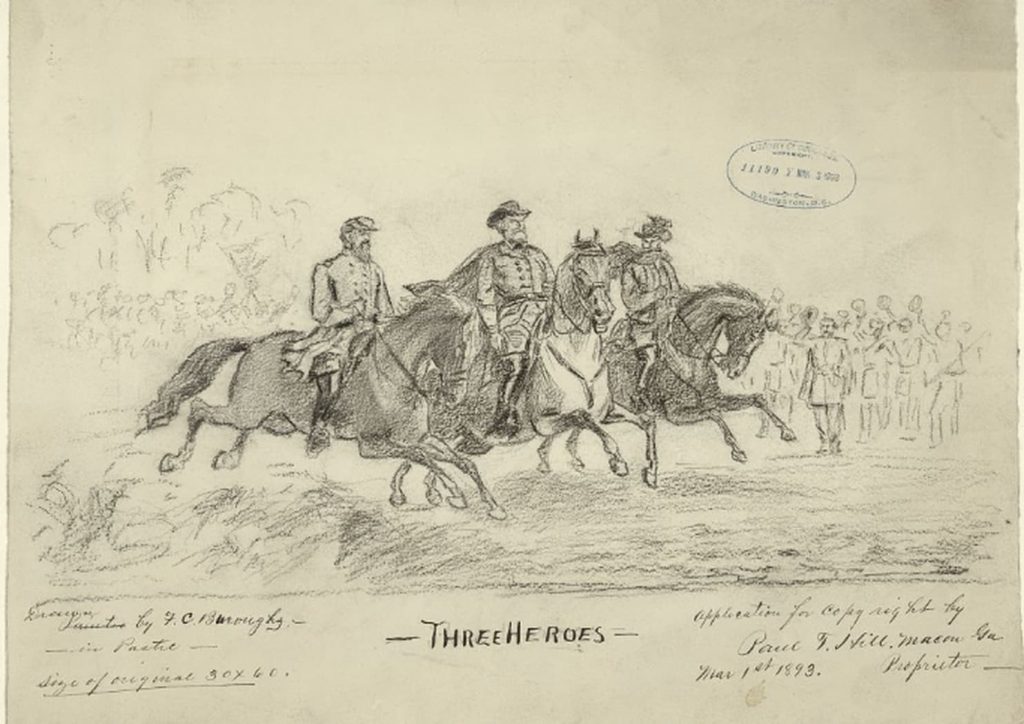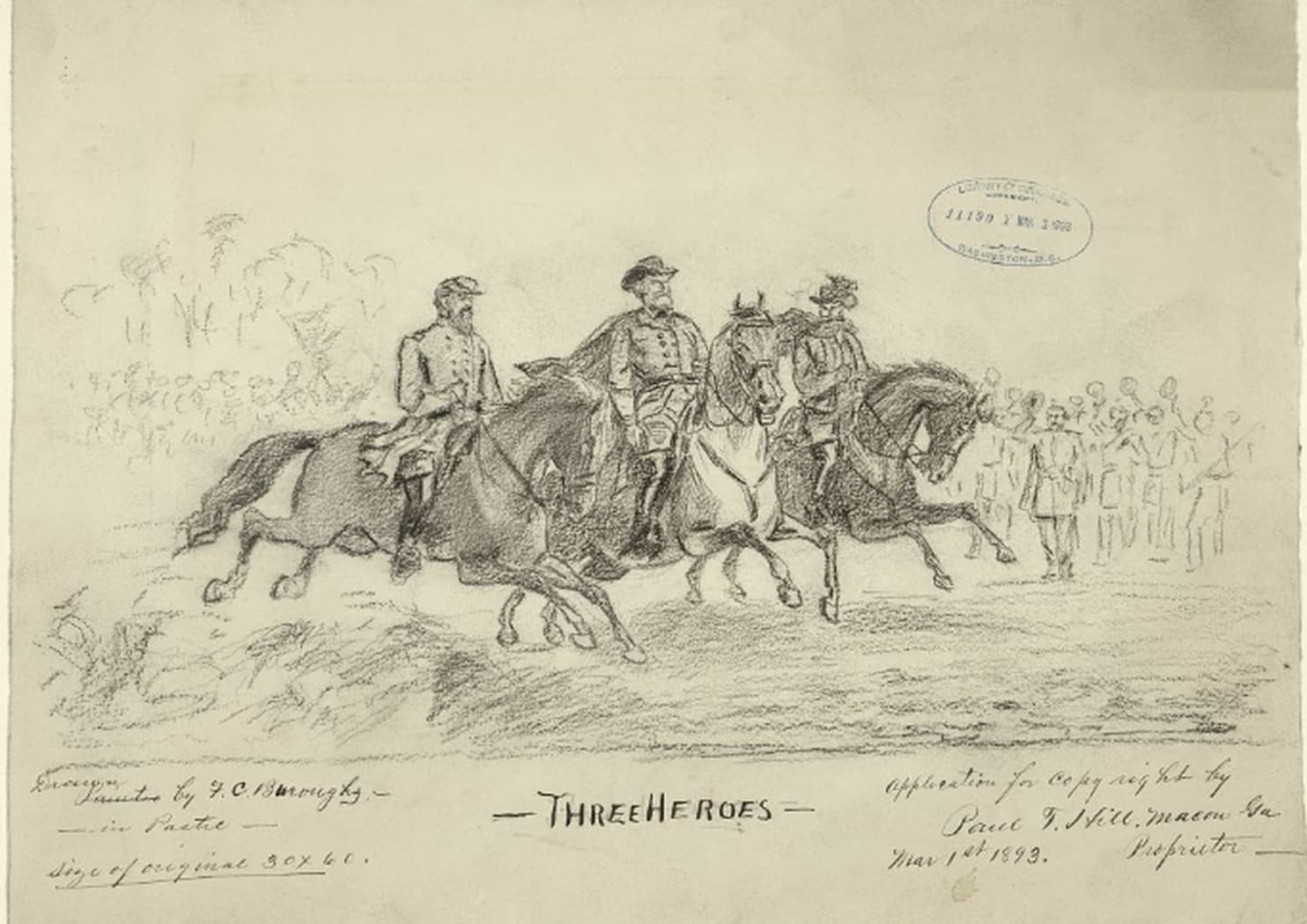
Confederate Gen. Robert E. Lee flanked by Stonewall Jackson and J.E.B. Stuart. (Library of Congress)
In his sculpted image on Monument Avenue in Richmond, a leafy boulevard hemmed by stately residences, J.E.B. Stuart is immortalized on horseback.
The cavalry commander developed a reputation for leading Confederate troops on raids and fruitful intelligence-gathering missions, helping cement Stuart’s legacy as a legendary figure in the minds of white Southerners after the Civil War, according to Paul Quigley, director of the Virginia Center for Civil War Studies at Virginia Tech. But he also became a scapegoat for the Confederate’s most critical loss.
“He was held up as a classic Southern military hero — very dashing, good looking and had this reputation for bravery as well as a little bit of cheekiness,” Quigley said.
Stuart’s legacy, along with other iconic Civil War figures, is commemorated in imagery throughout the South that factor prominently into the romanticism tied to the Confederacy. Many of those public declarations have been reexamined in recent years after a gunman walked into a historic African Methodist Episcopal Church in Charleston, S.C., and gunned down nine parishioners in 2015, and, again, when a Unite the Right rally in Charlottesville turned deadly last August.
Most recently, Richmond officials decided to strip an elementary school of Stuart’s moniker last month and rename it after former president Barack Obama. Last fall, a Fairfax County high school also named after Stuart was renamed Justice High School. The name and signage at the school were changed this week.
Born James Ewell Brown Stuart on Feb. 6, 1833, in Patrick County, Va., Stuart attended West Point when Robert E. Lee was the school’s superintendent, Quigley said. Lee ultimately became Confederate commander of the Army of Northern Virginia, which fought one of the most crucial Civil War battlefronts, according to PBS.org.
Stuart belonged to the U.S. Army, serving in Texas and Kansas, before resigning shortly after Virginia seceded, Quigley said. His father-in-law, Gen. Philip St. George Cooke, fought for the Union Army, creating a rift in the family — so much so that Stuart’s son, named after his grandfather, was renamed, Stuart’s great-great grandson wrote in a column published in the Richmond Times-Dispatch.
Stuart, at one point, owned at least two slaves, Quigley said.
He commanded all of the Army of Northern Virginia’s cavalry brigades beginning in March 1862, according to the National Park Service.
The cavalryman was also known for his wartime antics. He stole Union Gen. John Pope’s uniform during a raid, Quigley said. And, after striking a railroad stop in Fairfax, Stuart sent a telegram to Quartermaster Gen. Montgomery Meigs to deride the stock of Union mules Stuart’s troops had recently captured.
But his record, in the eyes of some in the Confederacy, was blemished, Quigley said, after Stuart fell out of touch with Confederate forces during the Battle of Gettysburg — the bloodiest and one of the most decisive Civil War battles. His cavalry was late to the conflict, Quigley said, and the delay has lingered as one of the “what-ifs of Civil War history.”
Stuart died a day after he was shot outside Richmond in the Battle of Yellow Tavern, a conflict that killed more than 800 people, according to the National Park Service.
His remains rest at Hollywood Cemetery in Richmond.
–washingtonpost.com





